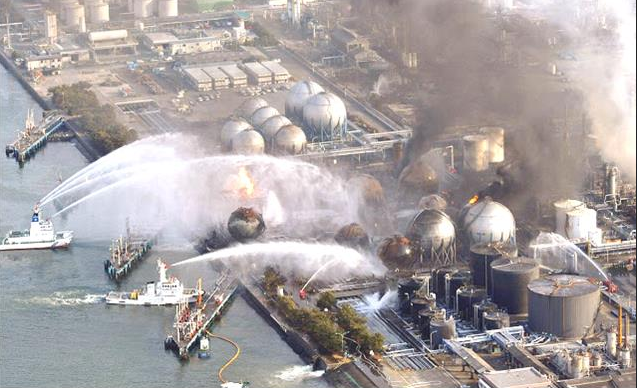Nuclear power has been confirmed as the safest means of generating electricity, according to data from Oxford University, but is still a controversial topic for many politicians despite its lack of carbon emissions.
Jeremy Corbyn claimed he was open-minded about nuclear power during the crucial Copeland by-election earlier this year, which was close to the Sellafield nuclear plant in Cumbria. The Labour leader dropped his previous calls for decommissioning nuclear plants by saying that they would be here for a long time and could expand under a Labour Government.
Nuclear Safest?
In terms of the number of people killed per Kilowatt-hour of energy produced, coal is the most dangerous fuel with thousands dying across the world from inhaling particulate matter. Nuclear, on the other hand, kills the fewest people, even with the environmental impact of uranium mining and the disasters of Chernobyl and Fukushima taken into account.

“Although deaths from accidents and air pollution have been combined, it’s important to note that air-pollution related deaths are dominant.
In the case of brown coal, coal, oil and gas, they account for greater than 99% of deaths, as well as 70% of nuclear-related deaths and all biomass-related deaths,” said a report by Our World in Data, an Oxford University project to show how global living conditions are changing.
Labour Manifesto
 While Labour’s 2017 election manifesto focused on clean and affordable energy it only briefly touched on this major power source.
While Labour’s 2017 election manifesto focused on clean and affordable energy it only briefly touched on this major power source.
“The UK has the world’s oldest nuclear industry and nuclear will continue to be part of the UK energy supply,” it said.
“We will support further nuclear projects and protect nuclear workers’ jobs and pensions. There are considerable opportunities for nuclear power and decommissioning both internationally and domestically,” it said.
That was largely it, although on Brexit it said “Labour will also retain access to Euratom to allow continued trade of fissile material, with access and collaboration over research vital to our nuclear industry.”
Accidents
 A keen eye will note that the Oxford report’s main source was from 2007, four years before the Tohoku earthquake and tsunami triggered a meltdown at Japan’s Fukushima nuclear plant.
A keen eye will note that the Oxford report’s main source was from 2007, four years before the Tohoku earthquake and tsunami triggered a meltdown at Japan’s Fukushima nuclear plant.
That was considered by the research to be a minor factor compared to the clear dangers that flow from burning fossil fuels.
The same can be said of the many concerns over the UK’s Sellafield nuclear site, which have yielded little if any definitive evidence of harm.
“For Fukushima, the majority of deaths are expected to be related to induced stress from the evacuation process (standing at 1600 deaths) rather than from direct radiation exposure,” said Our World in Data. “As stand-alone events these impacts are large.
However, even as isolated, large-impact events, the death toll stands at several orders of magnitude lower than deaths attributed to air pollution from other traditional energy sources – the World Health Organization estimates that 3 million die every year from ambient air pollution, and 4.3 million from indoor air pollution. As so often is the case, single events that make headlines overshadow permanent risks that result in silent tragedies”.
The study found that the dangers of climate change increases the perils of coal. “Energy sources that are unhealthy in the short-term are also unhealthy in the long-term. And those that are safer for the current generation are safer for future generations,” said the research, which concluded that impact of climate change was another reason to consider coal as far more damaging than nuclear.
Nuclear Waste
 To most people the biggest fear about nuclear power apart from the risk of a meltdown is what happens to the waste, which can remain dangerous for millions of years.
To most people the biggest fear about nuclear power apart from the risk of a meltdown is what happens to the waste, which can remain dangerous for millions of years.
However the World Nuclear Association insists that nuclear waste accounts for just a fraction of the toxic waste produced by industry every year, including from power generation.
A relatively small quantity of waste is produced to generate a lot of energy and just 3% of that nuclear waste is the very dangerous high-level type, which represents 95% of the radioactivity of all nuclear waste.
The International Atomic Energy Agency says that since the first plants started operating about 30% of used fuel waste has been reprocessed, and the volume of all the nuclear waste now in storage is the size of one 3 metre-tall building with the area of a football pitch.
by Stewart Vickers
The post Climate: Corbyn Backs Safest Energy Source? appeared first on Felix Magazine.
No comments:
Post a Comment